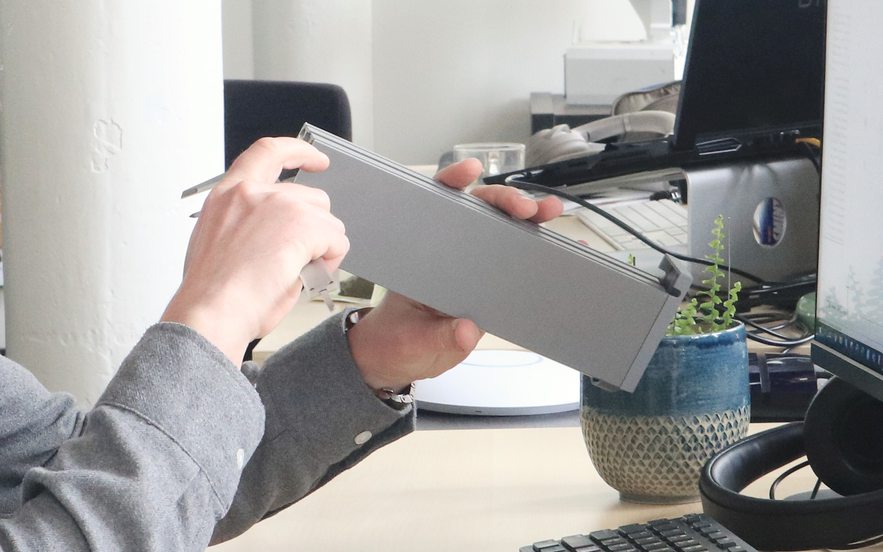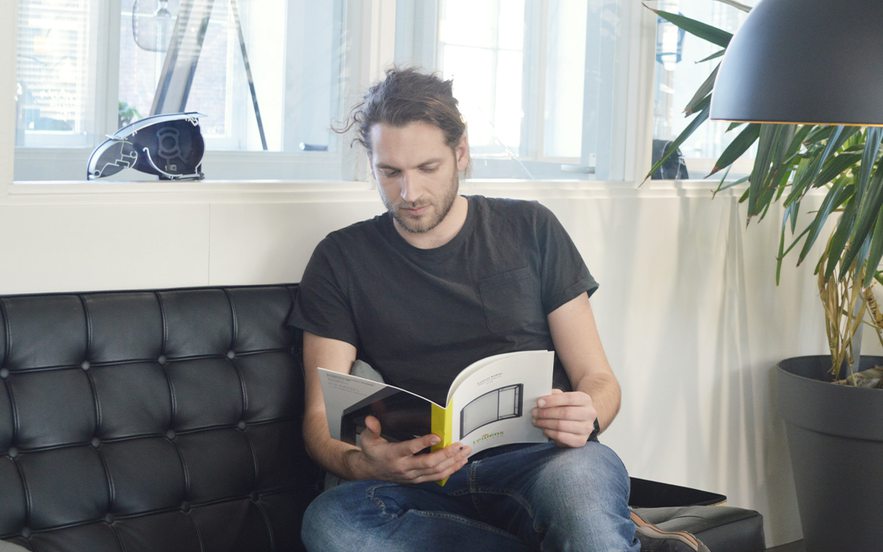Aluminum alloys in product design.
At Fabrique Invent we design many aluminum products, we already briefly discussed this in one of our previous blogs. This time we will take a closer look at aluminum alloys.
There are many aluminum alloys available, each with unique properties. By using additional alloying elements, the strength or machinability properties of the material can be played with. Alloying elements are generally divided into main alloying elements and secondary elements.
Main alloying elements
- Copper: Provides an increase in strength and makes it good heat treatable. With the addition of copper, the toughness and corrosion resistance decrease.
- Manganese: Provides a slight increase in strength and less deterioration in toughness and corrosion resistance compared to copper as an additive. When the temperature of this alloy increases, the strength decreases.
- Silicon: Mainly added to lower the melting temperature and make the aluminum suitable for casting.
- Magnesium: This addition increases the strength and corrosion of the material and is mainly used for sheet metal.
- Magnesium and Silicon: This is a special combination, it provides a higher strength and makes it very easy to extrude because of the silicon.
- Zinc: Provides a great increase in strength and is often combined with magnesium and silicon. This combination creates aluminum with the highest strength classification.

Secondary alloying elements are, for example: Iron for increasing strength, Chromium which increases crystal structure, Nickel for increasing hardness and strength, Lithium for increasing modulus of elasticity and Lead and Bismuth are used to improve machinability.
Fortunately, it is not the case that a designer has to find the right mixture of alloying elements every time for the perfect material for his or her product. Alloys are largely standardized and can be specified by series and branching.

Eight series are currently specified. Combinations have been optimized with alloying elements, which distinguishes them from the other series.
- 1xxx series
This virtually pure aluminum can be machined perfectly and has good corrosion resistance. Aluminum has low mechanical properties - 2xxx series
Copper is the main alloying element here, making it a relatively strong alloy, where the corrosion resistance is lower than with pure aluminum. - 3xxx series
Using manganese increases the strength by about 20% compared to the 1xxx series. - 4xxx series
Silicon can be added for a maximum of 12%, with this the melting temperature can be determined quite accurately. This series can be found in foundries. - 5xxx series
With magnesium as the main additive, seaworthy products can be made. The corrosion resistance, also in salty environments, is high. - 6xxx series
With added magnesium and silicon, several properties are improved without sacrificing much on other specifications. The special combination provides a higher strength and makes it very easy to extrude due to the silicon. - 7xxx series
By putting zinc in the aluminum, a very high-quality aluminum type is created that is characterized by its high strength properties. - 8xxx series
All other alloys.
As designers we are aware of the most common alloys and we thoroughly investigate which we specify for which type of product. This depends not only on the technical requirements, but also on the shape of the product or part to be designed. For example, not all series are common for extrusion and not every alloy is available as a plate.
Do you want to know more about aluminum alloys or do you have another question? Please feel free to contact us.
This article was written by Niels Schouten. Niels is an industrial designer, motion technologist and director at Fabrique Invent.
A short summary: aluminium
All the ins and outs about our favorite material.
Modular design in practice.
Our senior engineer Mike explains how we design in a modular way and think along with our customers.
Sustainable design does not exist.
How is constantly developing new products sustainable?